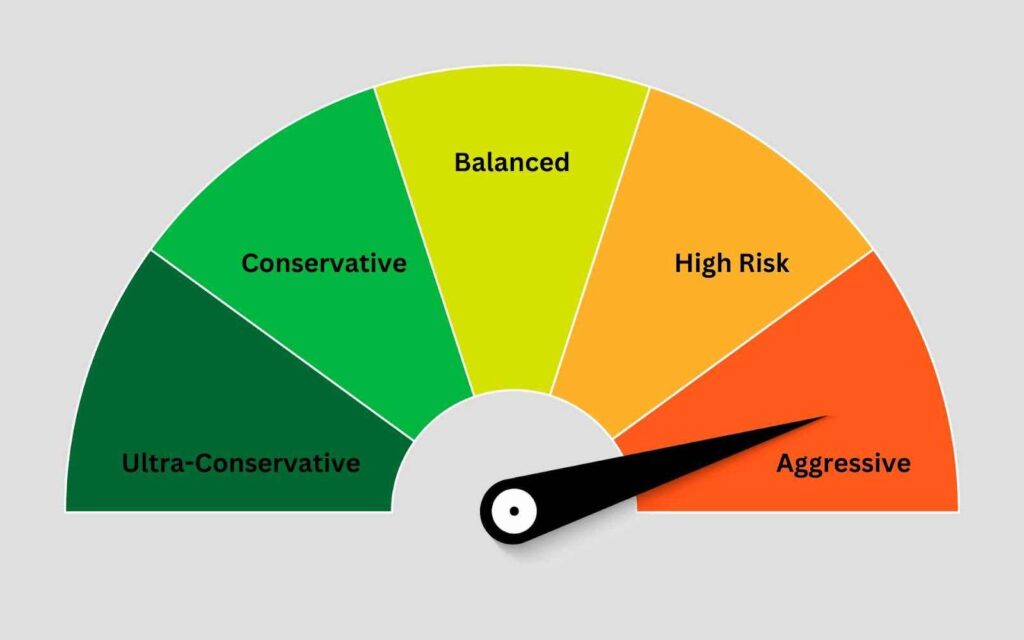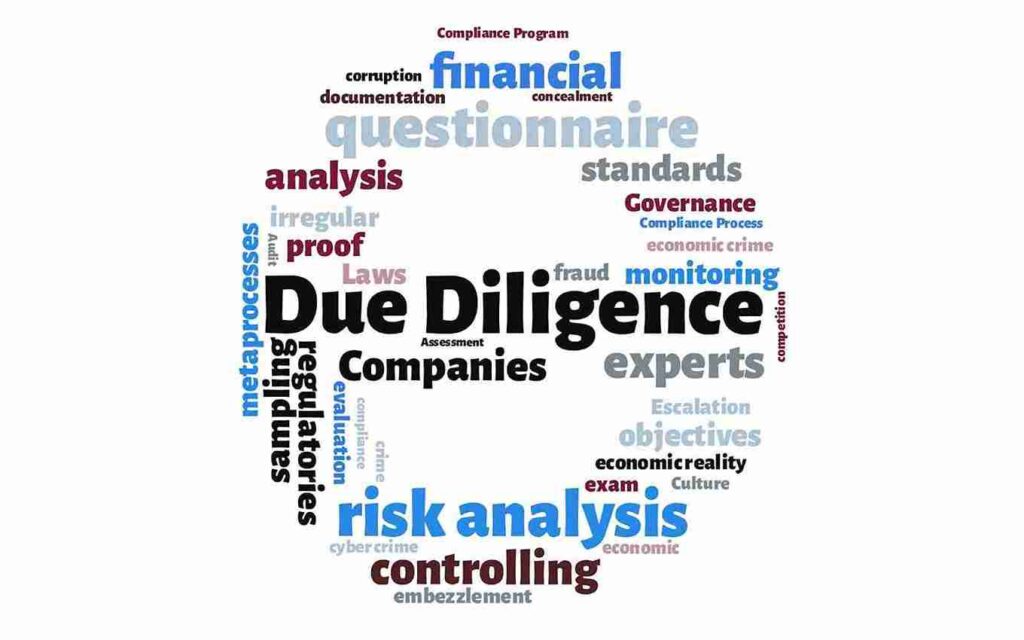Risk Management Strategies for Investing in Pre-Sale Crypto



Investing in pre-sale cryptocurrency is one of the best ways to make money in crypto before everyone. Avalanche was launched at $0.5 and within a year rose ten times its ICO price, reaching $5.28 by September 2020.
However risk management is critically important to ensure that a failed bet does not wipe out most of your capital.
We have brought you a few risk management strategies which if practiced before investing in pre-sale cryptocurrencies could give you the maximum amount of returns.
Before you read this article, make sure you know how token pre-sales work in crypto.
Necessity of Risk Management
Risk management refers to the act of managing your exposure with an aim to optimize your profits as well as limit your losses. This becomes highly important when dealing with volatile assets such as cryptocurrencies.
Top Proven Risk Management Strategies for Crypto Markets
We have consulted a few experts and came up with the following risk management strategies that have been tested.
Here is a list of 10 such risk management strategies.
Knowing Your Risk Appetite
This is the most important part of risk management in any investing.
Completely understanding your risk appetite is very important before choosing any risk management strategy. There are several type of risk appetites some of which are:

Ultra Conservative
Ultra conservatives are those investors which only care about capital preservation. They do not care much about the returns that they get on their wealth.
An example would be an investor who invests in USDC staking only and does not subscribe to ICOs or buys any token with a fluctuating value.
Conservative
The conservative investors are those which care about just earning enough returns so that they beat inflation. They do not seek to maximize their returns.
An example of a conservative investor could be a person who invests 80% of the portfolio in stable coin yields and invests only in blue chip cryptocurrency such as Ethereum or blue chip NFTs. It may also include a few DeFi activities such as lending, yield staking, etc., associated with it.
Here are top DeFi Lending Platforms for you to earn some extra income.
Balanced
A balanced sticker is that person who wants to prioritize capital preservation over the returns that they get on their investment. These investors typically allocate only a small portion of their investments in risky assets.
An example of a balanced investor could be a person who invests around 60% to 70% of their portfolio in fixed return assets. They invest the remaining in blue chip cryptocurrencies and allocate a very small percentage (approx. 5% – 10%) of the portfolio in higher risk assets such as Bitcoin Futures ETFs.
High Risk
High risk investors are those which want to maximize their returns but also have a small component of their portfolio which protects them from fluctuation in crypto markets.
An example of a high risk investor is a person whose portfolio contains as much as 70% ownership in high yield cryptocurrencies and DeFi activities associated with them and DeFi activities associated with them. A smaller portion of their holdings such as approximately 30% could be invested in either only stablecoins or a mixture of stablecoins and large cap cryptocurrencies.
Aggressive
Aggressive investors are only willing to make the highest amount of returns possible on their assets. They have a very little to none allocation of fixed assets such as stablecoins in their portfolio.
The portfolio of aggressive investors could look like 60 to 70 percent investment in high risk assets such as new crypto currencies or meme coins. Though they would hold some allocation to larger assets such as Ethereum and Bitcoin but that would not exceed 20% – 30% of their total assets.
Due Diligence

Performing due diligence is the most critical part of researching for a project before an ICO. It includes verification that the project exists in real life.
The following is a small and non-exhaustive checklist that I have been using to research about projects.
- Audit report from a well known auditor such as Certik or Peckshield.
- Evaluate if it solves any real life problem in a unique way. For example Chainlink solves the issue of secure blockchain communications through decentralized oracles.
- To evaluate the team you can mostly use the LinkedIn profiles to see their work history.
- Make sure that the technology can not be replaced in the near future.
- The most important step is to analyze the technomics and to make sure that the team or investors should not hold a majority control of the token supply even after the ICO. This also includes Governance Tokens.
- Make sure that the team has obtained all the regulatory approvals.
- A vibrant community is very important. Make sure that the team has a good community and all the users are actuals and not bots.
- Hold discussions with a few technological experts about the viability of the project.
Setting Your Investment Horizon
You definitely need an investment horizon after which you will withdraw from all or most of your holdings. If investors remain invested for a long time they might risk wiping off their gains that were accumulated over a certain period.

Exit Strategy
An exit strategy is equally important because without it you would end up treating your investment as emotional attachments. This is very detrimental to the concept of investing.
A typical exit strategy for ICO investing is to exit when the coin is listed. There are certain milestones where investors exit from a pre-sale crypto currency.
- At the Public Stage
- At the ICO Stage
- After listing on Major Exchanges
Diversification
Cryptocurrency markets are still largely unregulated. Until proper regulations come in we will continue to see authorities taking strict action on projects.
Also there are sufficient risks from other factors such as rug pulling, exploits, stealing, hacks, etc.
All these factors make it compulsory to diversify your assets. Earlier in the article we have touched upon various risk profiles. Depending on whichever suits you best, allocate funds in a way which minimizes the risk in case a project fails.
Typically we suggest you not invest more than 5% of your total portfolio value in Token Pre-Sales.
Conclusion
Token pre-sales are a very good way to make money if invested at the right time and with the right approach. Knowing your risk profile, diversifying your investments, doing some research and maintaining an investment horizon with an exit strategy surely helps you make the maximum returns.
Risk Management Strategies for Investing in Pre-Sale Crypto



Investing in pre-sale cryptocurrency is one of the best ways to make money in crypto before everyone. Avalanche was launched at $0.5 and within a year rose ten times its ICO price, reaching $5.28 by September 2020.
However risk management is critically important to ensure that a failed bet does not wipe out most of your capital.
We have brought you a few risk management strategies which if practiced before investing in pre-sale cryptocurrencies could give you the maximum amount of returns.
Before you read this article, make sure you know how token pre-sales work in crypto.
Necessity of Risk Management
Risk management refers to the act of managing your exposure with an aim to optimize your profits as well as limit your losses. This becomes highly important when dealing with volatile assets such as cryptocurrencies.
Top Proven Risk Management Strategies for Crypto Markets
We have consulted a few experts and came up with the following risk management strategies that have been tested.
Here is a list of 10 such risk management strategies.
Knowing Your Risk Appetite
This is the most important part of risk management in any investing.
Completely understanding your risk appetite is very important before choosing any risk management strategy. There are several type of risk appetites some of which are:

Ultra Conservative
Ultra conservatives are those investors which only care about capital preservation. They do not care much about the returns that they get on their wealth.
An example would be an investor who invests in USDC staking only and does not subscribe to ICOs or buys any token with a fluctuating value.
Conservative
The conservative investors are those which care about just earning enough returns so that they beat inflation. They do not seek to maximize their returns.
An example of a conservative investor could be a person who invests 80% of the portfolio in stable coin yields and invests only in blue chip cryptocurrency such as Ethereum or blue chip NFTs. It may also include a few DeFi activities such as lending, yield staking, etc., associated with it.
Here are top DeFi Lending Platforms for you to earn some extra income.
Balanced
A balanced sticker is that person who wants to prioritize capital preservation over the returns that they get on their investment. These investors typically allocate only a small portion of their investments in risky assets.
An example of a balanced investor could be a person who invests around 60% to 70% of their portfolio in fixed return assets. They invest the remaining in blue chip cryptocurrencies and allocate a very small percentage (approx. 5% – 10%) of the portfolio in higher risk assets such as Bitcoin Futures ETFs.
High Risk
High risk investors are those which want to maximize their returns but also have a small component of their portfolio which protects them from fluctuation in crypto markets.
An example of a high risk investor is a person whose portfolio contains as much as 70% ownership in high yield cryptocurrencies and DeFi activities associated with them and DeFi activities associated with them. A smaller portion of their holdings such as approximately 30% could be invested in either only stablecoins or a mixture of stablecoins and large cap cryptocurrencies.
Aggressive
Aggressive investors are only willing to make the highest amount of returns possible on their assets. They have a very little to none allocation of fixed assets such as stablecoins in their portfolio.
The portfolio of aggressive investors could look like 60 to 70 percent investment in high risk assets such as new crypto currencies or meme coins. Though they would hold some allocation to larger assets such as Ethereum and Bitcoin but that would not exceed 20% – 30% of their total assets.
Due Diligence

Performing due diligence is the most critical part of researching for a project before an ICO. It includes verification that the project exists in real life.
The following is a small and non-exhaustive checklist that I have been using to research about projects.
- Audit report from a well known auditor such as Certik or Peckshield.
- Evaluate if it solves any real life problem in a unique way. For example Chainlink solves the issue of secure blockchain communications through decentralized oracles.
- To evaluate the team you can mostly use the LinkedIn profiles to see their work history.
- Make sure that the technology can not be replaced in the near future.
- The most important step is to analyze the technomics and to make sure that the team or investors should not hold a majority control of the token supply even after the ICO. This also includes Governance Tokens.
- Make sure that the team has obtained all the regulatory approvals.
- A vibrant community is very important. Make sure that the team has a good community and all the users are actuals and not bots.
- Hold discussions with a few technological experts about the viability of the project.
Setting Your Investment Horizon
You definitely need an investment horizon after which you will withdraw from all or most of your holdings. If investors remain invested for a long time they might risk wiping off their gains that were accumulated over a certain period.

Exit Strategy
An exit strategy is equally important because without it you would end up treating your investment as emotional attachments. This is very detrimental to the concept of investing.
A typical exit strategy for ICO investing is to exit when the coin is listed. There are certain milestones where investors exit from a pre-sale crypto currency.
- At the Public Stage
- At the ICO Stage
- After listing on Major Exchanges
Diversification
Cryptocurrency markets are still largely unregulated. Until proper regulations come in we will continue to see authorities taking strict action on projects.
Also there are sufficient risks from other factors such as rug pulling, exploits, stealing, hacks, etc.
All these factors make it compulsory to diversify your assets. Earlier in the article we have touched upon various risk profiles. Depending on whichever suits you best, allocate funds in a way which minimizes the risk in case a project fails.
Typically we suggest you not invest more than 5% of your total portfolio value in Token Pre-Sales.
Conclusion
Token pre-sales are a very good way to make money if invested at the right time and with the right approach. Knowing your risk profile, diversifying your investments, doing some research and maintaining an investment horizon with an exit strategy surely helps you make the maximum returns.
 (@podcastnotes) January 26, 2024
(@podcastnotes) January 26, 2024 Saitama King Dubai SAITA PRO
Saitama King Dubai SAITA PRO
